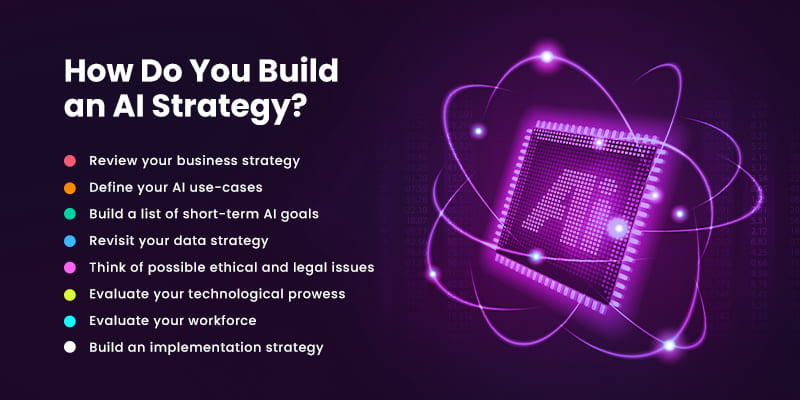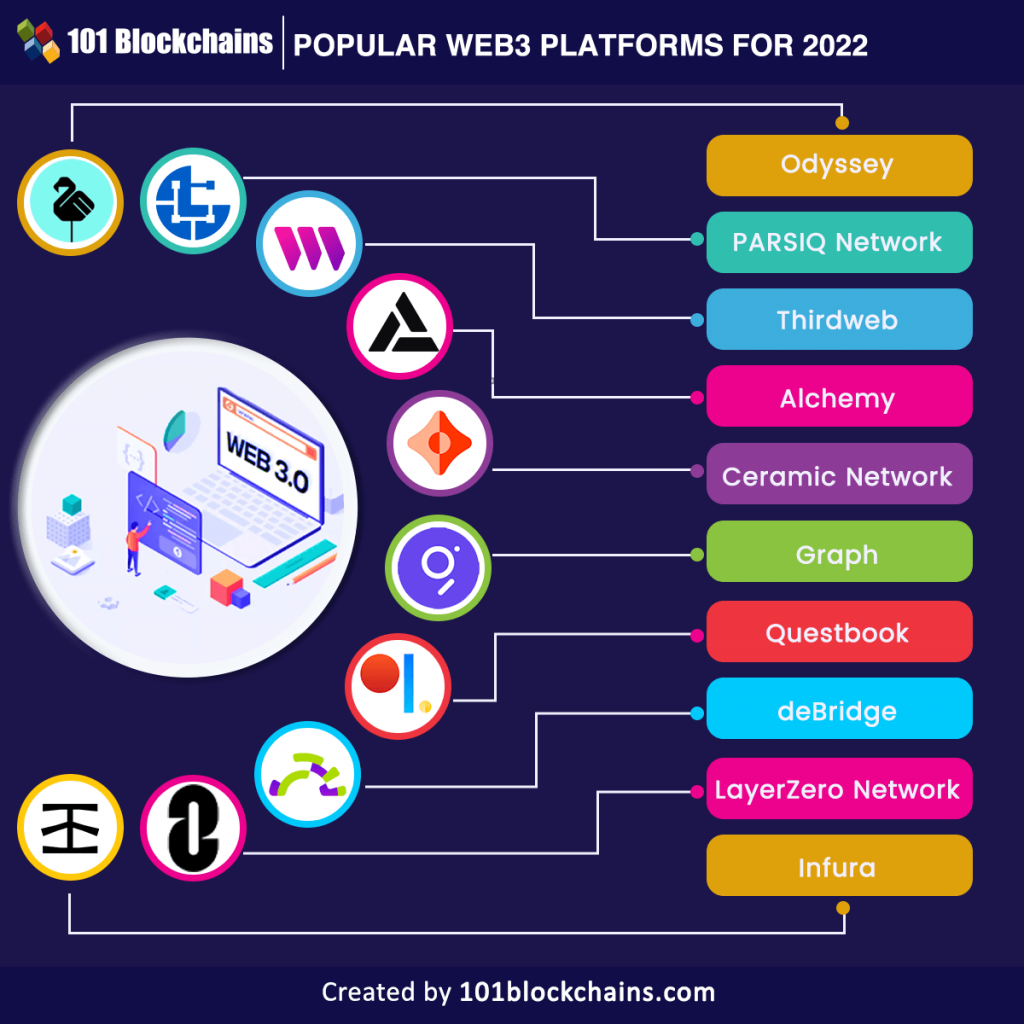
Developing Your AI Strategy: A Beginner’s Guide to Business Transformation
In today’s fast-paced business world, Artificial Intelligence (AI) is no longer a futuristic concept confined to sci-fi movies or the realm of tech giants. It’s a powerful, accessible tool that can revolutionize how businesses operate, innovate, and connect with their customers. From automating routine tasks to uncovering hidden insights in vast amounts of data, AI offers unprecedented opportunities.
However, simply having AI tools isn’t enough. To truly harness its power and ensure a sustainable competitive advantage, businesses need a well-thought-out AI strategy. This isn’t just about picking the latest software; it’s about aligning AI initiatives with your core business goals, managing risks, and building a future-proof foundation.
This comprehensive guide will break down the process of developing an AI strategy into easy-to-understand steps, perfect for business owners, managers, and anyone new to the world of AI.
What Exactly is an AI Strategy and Why Do You Need One?
Before diving into the "how," let’s clarify the "what" and "why."
An AI strategy is a clear, actionable plan that outlines how your business will use Artificial Intelligence to achieve its objectives. It’s a roadmap that connects your business vision with AI capabilities, ensuring that every AI project serves a purpose and delivers measurable value.
Think of it like building a house. You wouldn’t just buy a pile of bricks and hope for the best. You’d need blueprints, a budget, a timeline, and a clear idea of what kind of house you want. An AI strategy is your blueprint for integrating AI into your business.
Why is an AI Strategy Essential for Your Business?
- Competitive Advantage: Early adopters with a clear strategy can gain a significant edge over competitors. AI can help you innovate faster, optimize operations, and understand your market better.
- Optimized Resource Allocation: Without a strategy, you risk wasting time, money, and effort on AI projects that don’t align with your goals or provide real ROI (Return on Investment).
- Risk Mitigation: AI comes with its own set of challenges, including data privacy, ethical concerns, and technical complexities. A strategy helps you identify and manage these risks proactively.
- Scalability: A strategic approach ensures that successful AI initiatives can be scaled up and integrated across different departments, maximizing their impact.
- Innovation and Growth: AI can unlock new business models, products, and services that were previously unimaginable, driving long-term growth.
- Enhanced Decision-Making: By leveraging AI for data analysis, you can make more informed, data-driven decisions rather than relying on guesswork.
Phase 1: Laying the Foundation – Vision and Assessment
The first step in developing your AI strategy is to understand where you are now and where you want to go. This foundational phase is crucial for ensuring your AI efforts are truly impactful.
1. Assess Your Current Business Landscape
Before you can build, you need to know what you’re building on. This involves a thorough look at your existing operations, data, technology, and people.
- Current Business Goals: What are your top 3-5 business objectives for the next 1-3 years? (e.g., increase customer satisfaction, reduce operational costs, enter new markets, improve product quality). AI should directly support these.
- Existing Technology Stack: What systems are you currently using (CRM, ERP, marketing automation, data analytics tools)? How integrated are they?
- Data Availability and Quality: This is perhaps the most critical component for AI.
- What data do you collect (customer data, sales data, operational data, website analytics)?
- Where is it stored?
- How clean, consistent, and accessible is it? (AI models are only as good as the data they’re trained on – "Garbage In, Garbage Out").
- Organizational Readiness:
- Do your employees have the necessary skills (data literacy, basic AI understanding)?
- Is your company culture open to change and innovation?
2. Define Clear Business Goals for AI
Don’t implement AI just because everyone else is. Connect AI directly to your business challenges and opportunities.
- Identify Pain Points: Where are your biggest inefficiencies? What processes are slow, manual, or prone to human error? (e.g., long customer service wait times, manual data entry, inefficient supply chain).
- Explore Growth Opportunities: Where could AI help you grow? (e.g., personalized marketing, predictive analytics for sales, new product development).
- Brainstorm Specific Use Cases: Based on your pain points and opportunities, think of concrete ways AI could help.
- Example Use Cases:
- Customer Service: Chatbots for instant support, AI-powered routing of customer inquiries.
- Sales & Marketing: Personalized product recommendations, predictive lead scoring, automated ad bidding.
- Operations: Predictive maintenance for machinery, supply chain optimization, automated quality control.
- Finance: Fraud detection, automated invoice processing, financial forecasting.
- HR: Automated resume screening, employee sentiment analysis.
- Example Use Cases:
Tip: Start with a few high-impact, achievable use cases rather than trying to solve everything at once.
3. Build Your AI Team & Expertise
You don’t need an army of AI scientists from day one, but you do need key roles and a commitment to learning.
- Leadership Buy-in: AI initiatives need support from top management to secure resources and drive change.
- Cross-Functional Team: AI projects often require collaboration between different departments (IT, marketing, sales, operations).
- Key Roles (Internal or External):
- Project Manager: To oversee the initiative.
- Data Scientist/Analyst: To clean, analyze data, and build models.
- Domain Expert: Someone from the business side who understands the specific problem AI is trying to solve.
- IT/Technical Support: To ensure infrastructure is ready and integrated.
- Upskilling & Training: Invest in training your existing employees on AI concepts, data literacy, and new tools. This fosters an AI-ready culture.
Phase 2: Data & Technology Readiness – The "How"
With your vision in place, it’s time to focus on the practical foundations: your data and the technology you’ll use.
4. Develop a Robust Data Strategy
AI runs on data. A strong data strategy is the backbone of any successful AI initiative.
- Data Collection: Identify all relevant data sources. How will you collect new data?
- Data Storage & Infrastructure: Where will your data live? Cloud-based solutions (AWS, Azure, Google Cloud) are often preferred for their scalability and AI services.
- Data Quality & Governance: This is paramount.
- Cleanliness: Remove errors, duplicates, and inconsistencies.
- Completeness: Ensure you have all necessary information.
- Consistency: Data should be formatted uniformly.
- Accessibility: Make sure the right people and systems can access the data securely.
- Governance: Establish rules and processes for how data is collected, stored, used, and protected. Who owns the data? Who can access it?
- Data Security & Privacy: Implement strong measures to protect sensitive data, complying with regulations like GDPR or CCPA.
5. Choose Your Technology Stack
The right technology enables your AI strategy. This isn’t just about buying software; it’s about building a sustainable ecosystem.
- Build vs. Buy:
- Buy (Off-the-shelf solutions): For common problems (e.g., CRM with AI features, marketing automation platforms with AI). Often quicker to implement and less resource-intensive.
- Build (Custom solutions): For unique problems or competitive differentiation. Requires in-house expertise or strong partnerships.
- AI Platforms & Tools:
- Cloud AI Services: AWS AI/ML, Google Cloud AI Platform, Azure AI Services offer pre-built AI models (for image recognition, natural language processing) and tools to build custom ones.
- Open-Source Frameworks: TensorFlow, PyTorch are popular for custom model development if you have data scientists.
- Data Analytics & Visualization Tools: Tableau, Power BI, Python, R to understand and present your data.
- Integration Capabilities: Ensure new AI tools can seamlessly integrate with your existing systems to avoid data silos and manual workarounds.
Phase 3: Implementation & Execution – The "Doing"
Now that you have your plan and foundations, it’s time to put things into action.
6. Start Small: Pilot Projects & MVPs
Don’t try to roll out a massive AI transformation all at once. Begin with small, manageable projects.
- Minimum Viable Product (MVP): Develop a basic version of your AI solution that addresses a specific problem and provides core value.
- Pilot Project: Implement the MVP in a limited scope (e.g., one department, a small group of customers) to test its effectiveness.
- Key Benefits of Piloting:
- Learn and Iterate: Identify what works and what doesn’t with minimal risk.
- Demonstrate Value: Show tangible results to secure further investment and buy-in.
- Manage Change: Allow employees to get comfortable with AI gradually.
7. Measure ROI and Define Success Metrics
How will you know if your AI initiative is successful? You need clear metrics.
- Define KPIs (Key Performance Indicators) before you start:
- Cost Reduction: (e.g., 20% reduction in customer service call volume).
- Revenue Increase: (e.g., 15% increase in upsells due to personalized recommendations).
- Efficiency Gains: (e.g., 30% faster data processing).
- Customer Satisfaction: (e.g., improved NPS score, reduced churn).
- Track and Analyze: Continuously monitor your KPIs and analyze the performance of your AI models. Be prepared to adjust or refine your approach based on the data.
8. Integrate & Scale
Once a pilot project proves successful, it’s time to integrate it more deeply and consider scaling.
- Integration: Embed the AI solution into your core business processes and systems. This might involve API integrations or developing custom connectors.
- Scalability Planning: Design your AI solutions to handle increasing data volumes and user loads.
- Phased Rollout: Implement successful solutions across other departments or locations in a structured, phased manner.
Phase 4: Ethics, Governance & Continuous Improvement – The "Sustaining"
An AI strategy isn’t a one-time project; it’s an ongoing commitment. This final phase ensures your AI efforts are responsible, secure, and continuously evolving.
9. Prioritize Responsible AI & Ethics
AI is powerful, and with great power comes great responsibility. Ethical considerations are paramount.
- Bias Mitigation: AI models can reflect biases present in the data they are trained on (e.g., gender, racial bias). Actively work to identify and reduce bias in your data and algorithms.
- Transparency & Explainability: Can you explain how your AI model arrived at a particular decision? This is crucial for trust, especially in sensitive areas like lending or hiring.
- Privacy & Data Security: Reinforce your data governance policies to protect personal and sensitive information.
- Fairness & Accountability: Ensure your AI systems are used fairly and that there are clear lines of accountability for their decisions and impacts.
- Human Oversight: Maintain human oversight in critical AI-driven decisions, especially initially. AI should augment human capabilities, not replace judgment entirely.
10. Establish Robust Governance & Security
Beyond ethics, formal governance and security protocols are essential.
- AI Governance Framework: Define policies, roles, and responsibilities for managing AI projects from inception to deployment.
- Regular Audits: Conduct periodic reviews of your AI systems for performance, security vulnerabilities, and ethical compliance.
- Cybersecurity for AI: AI systems can be targets for attacks. Implement strong cybersecurity measures to protect your models and data.
11. Foster a Culture of Continuous Learning & Iteration
The AI landscape is constantly evolving. Your strategy must evolve with it.
- Monitoring & Maintenance: AI models need continuous monitoring and retraining as data patterns change or new data becomes available.
- Feedback Loops: Establish mechanisms for collecting feedback from users and customers to identify areas for improvement.
- Stay Informed: Keep abreast of new AI technologies, best practices, and ethical guidelines.
- Invest in People: Continuously train and upskill your workforce to keep pace with AI advancements. Encourage experimentation and learning.
Common Pitfalls to Avoid in Your AI Strategy
As you embark on your AI journey, be aware of these common missteps:
- Lack of Clear Business Goals: Implementing AI without a specific problem to solve or objective to meet is a recipe for failure.
- Ignoring Data Quality: AI models are only as good as the data they consume. Poor data leads to poor results.
- Underestimating Change Management: Employees may resist new AI systems. Proper communication, training, and involving them in the process are crucial.
- Trying to Do Too Much Too Soon: Starting with overly ambitious projects can lead to overwhelming complexity and failure.
- Forgetting About Ethics and Bias: Neglecting these aspects can lead to reputational damage, legal issues, and poor customer trust.
- Treating AI as a One-Off Project: AI requires ongoing maintenance, monitoring, and adaptation.
- Lack of Leadership Buy-in: Without support from the top, AI initiatives can struggle to gain traction and resources.
Conclusion: Your AI Journey Starts Now
Developing an AI strategy for your business is a transformative journey, not a destination. It requires careful planning, a clear understanding of your business needs, a focus on data quality, and a commitment to continuous learning and ethical considerations.
By following these steps, even as a beginner, you can lay a strong foundation for integrating Artificial Intelligence into your operations. AI holds immense potential to drive efficiency, foster innovation, enhance customer experiences, and unlock new growth opportunities. The time to start building your AI strategy is now – embrace the future, intelligently.



Post Comment